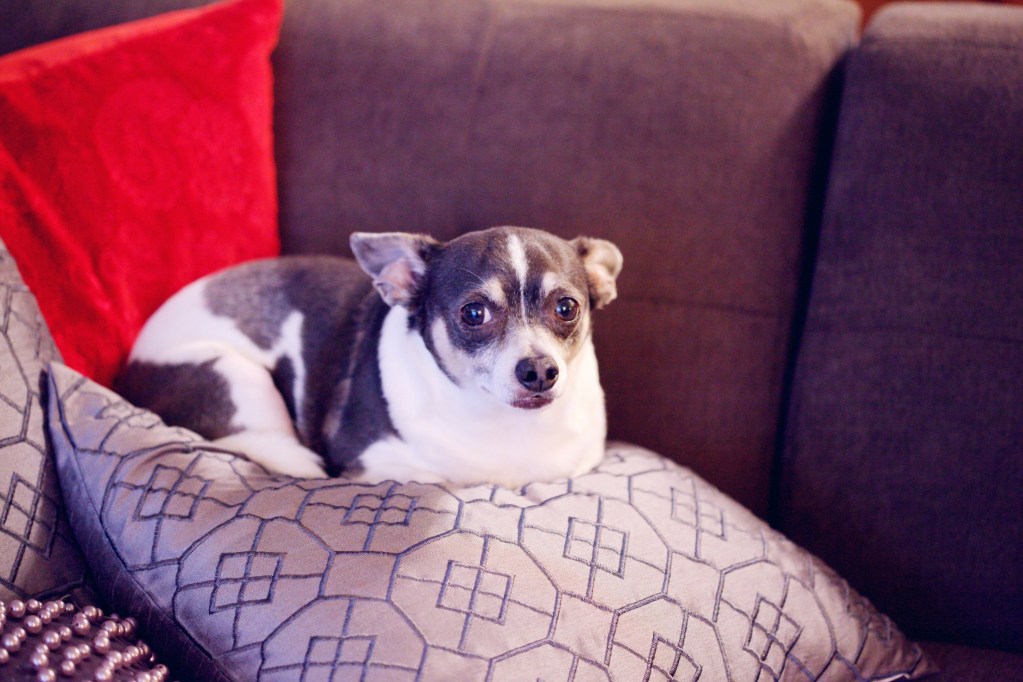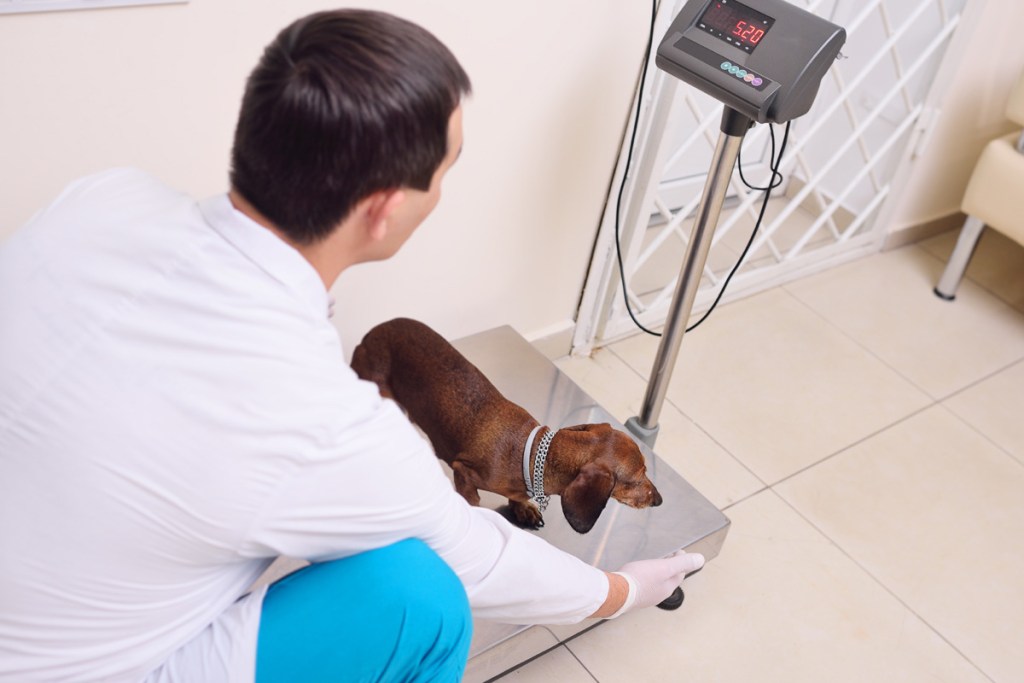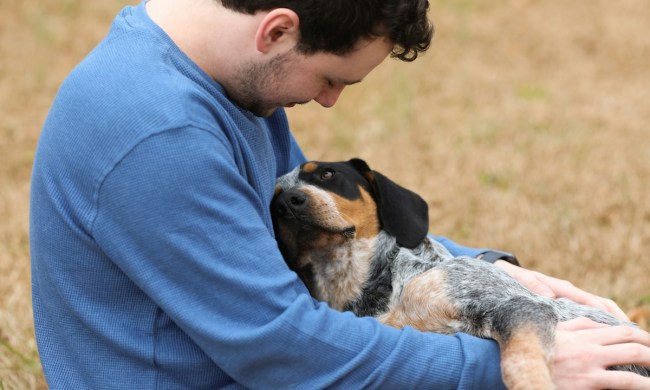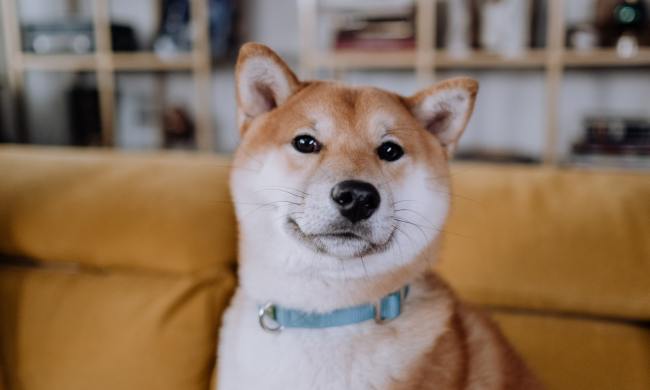
If you share your life with a dog who loves food more than life itself, it’s hard to ignore those pleading eyes. Many pet parents understandably give in to this begging, but too much of a good thing can contribute to obesity in dogs, which equates to a number of health problems for your pet. According to the Association for Pet Obesity Prevention (APOP) 2018 Pet Obesity Survey, 55.8% of dogs in the U.S. are considered overweight or obese. Can you say with confidence that your dog isn’t in that small majority?
- Consult with a veterinarian before developing a weight-loss plan
- Counting calories is a classic diet strategy
- Changing your dog’s food may be necessary
- Keep people food off-limits, no matter how much they beg
- Feed only healthy treats, even on special occasions
- Reward your dog with praise and play
- Walk your dog for weight loss
- Conduct monthly weight checks and regular vet exams
It’s essential that pet parents control the situation so that they don’t have obese dogs, as it puts them at risk for several health conditions, including osteoarthritis, Type 2 diabetes, heart disease, joint injury, and various forms of cancer. National Pet Obesity Awareness Day, which falls on October 13, offers a great reminder of the importance of keeping your pet’s weight in check. No matter the time of year, though, the following are effective ways to help your obese dog get back in shape.
Consult with a veterinarian before developing a weight-loss plan

According to APOP founder and veterinarian Ernie Ward, DVM, CVFT, pet parents should never put their dogs on a diet without a vet’s assistance and approval. Your veterinarian can confirm whether your dog is overweight or obese and check for underlying health conditions associated with weight gain, such as hypothyroidism and Cushing’s disease. If your dog has a hormonal imbalance or other medical concerns, medication could be a key part of your dog’s daily health routine from now on.
Once health conditions have been ruled out, your veterinarian can provide a healthy target weight based on your dog’s breed and size. Experts say that a safe weight-loss goal for most dogs is 3% to 5% of body weight per month. Once you have a goal in mind, you can create a realistic diet and exercise plan that works for both you and your furry friend.
Counting calories is a classic diet strategy

If you want to succeed at helping your dog lose weight, you must have a daily calorie limit and stay under that number, writes veterinarian Sarah Wooten. Calorie count matters, especially with small dogs, when even an extra kibble or two every day will add up to unhealthy weight, according to Wooten.
The Pet Nutrition Alliance offers an online calorie calculator, but it’s best to partner with your veterinarian to determine the daily calorie intake to help your dog safely lose weight. Please don’t change anything without letting your vet know first!
Changing your dog’s food may be necessary

If you faithfully measure out your dog’s food and treats and have increased her exercise, but she’s still not losing weight on a regular maintenance diet, then it’s time to discuss a specialized food with your veterinarian. According to Wooten, Hill’s Prescription Diet metabolic weight-management dog food has been a miracle product for many dogs who have trouble losing weight. Specialized diets contain ingredients that help ramp up fat burning while still delivering complete and balanced nutrition, but you’ll need a vet’s prescription in order to buy this from a pet store.
Keep people food off-limits, no matter how much they beg

To get your dog’s weight under control, you have to stop giving in to the begging or allowing your dog to eat from plates after meals. Wooten cautions pet parents that many dogs put on “sneaky calories” by convincing people in the house to fork over “just one bite.” Some dogs will go as far as to lick the dishes! To keep your dog from begging at the table:
- Feed her in a separate room just before you sit down to eat so she’s focused on her food.
- Use a gate to keep your dog out of the dining room during mealtimes.
- If your dog does have access to the dining room, teach her a “go to your place” command. That place could be her dog bed or crate positioned away from the table.
- Provide a chew bone such as Nylabone to keep her busy while the family eats.
- If you truly can’t resist feeding them from the table, grab a few pieces of their kibble to hand them throughout the meal.
Feed only healthy treats, even on special occasions

Experts at the ASPCA say that some commercially produced pet treats are deceptively high in calories. To avoid derailing your weight-loss program, feed safe and healthy fruits and vegetables such as green beans, baby carrots, or apples without the core and seeds. Not all common household fruits are safe for dogs — grapes and raisins, for one, are toxic.
You can learn which foods are toxic to pets at the ASPCA Animal Poison Control Center. Even safe fruits can be high in sugar, so it’s always smart to build an approved snacks list with your vet before feeding your pup something new!
Reward your dog with praise and play

Although many sources of excess calories are a direct result of begging and mealtimes, you may not consider that your dog gets extra food while training, too. Food-motivated dogs can be exponentially easier to train at times, but those treats — even broken into pieces — can add up while you’re not looking. Meanwhile — your dog won’t mind one bit!
Instead of piling on the extra calories during walks or training sessions, consider swapping out training treats for their regular mealtime kibble. Odds are, they won’t even notice! The even healthier choice is to opt out of feeding your dog as a reward. If they get hyped up for a scratch behind the ears or a tug on a toy, that can be motivating, too!
Walk your dog for weight loss

It’s important to have a conversation with your veterinarian before beginning any new exercise program, writes Ward in his article, Walking the Dog: Tips for Getting the Most Out of Exercising Your Pooch, once published on the APOP website. Ward recommends using a comfortable harness or head halter over collars and choke chains when walking your dog for weight loss.
Also, using a 4-foot leash will keep your dog close as you maintain a steady pace. And don’t forget to bring water if your workout will be longer than 30 minutes. Ward’s article offers a great exercise schedule showing how to build on the length and intensity of the weekly walks, so don’t be afraid to do your research.
Conduct monthly weight checks and regular vet exams

As you work to get your dog back in shape, it’s important to have your veterinarian do monthly weigh-ins. Since your dog will be spending more time walking, it’s a good idea to have a technician check your dog’s pads for any injuries or problems and to confirm that her nails are a healthy length. Once your dog reaches the target weight, consider putting her on the scales every three months to ensure the pounds aren’t sneaking back on.
Veterinary experts say that for most dogs, the secret to weight loss is a dedicated, committed, and concerned family. Routine is key! Food hounds will keep eating as long as they have access to food, so it’s up to pet parents to control the calories. The hard work will pay off when you have many more happy and healthy years with your beloved pup. Happy tails!



